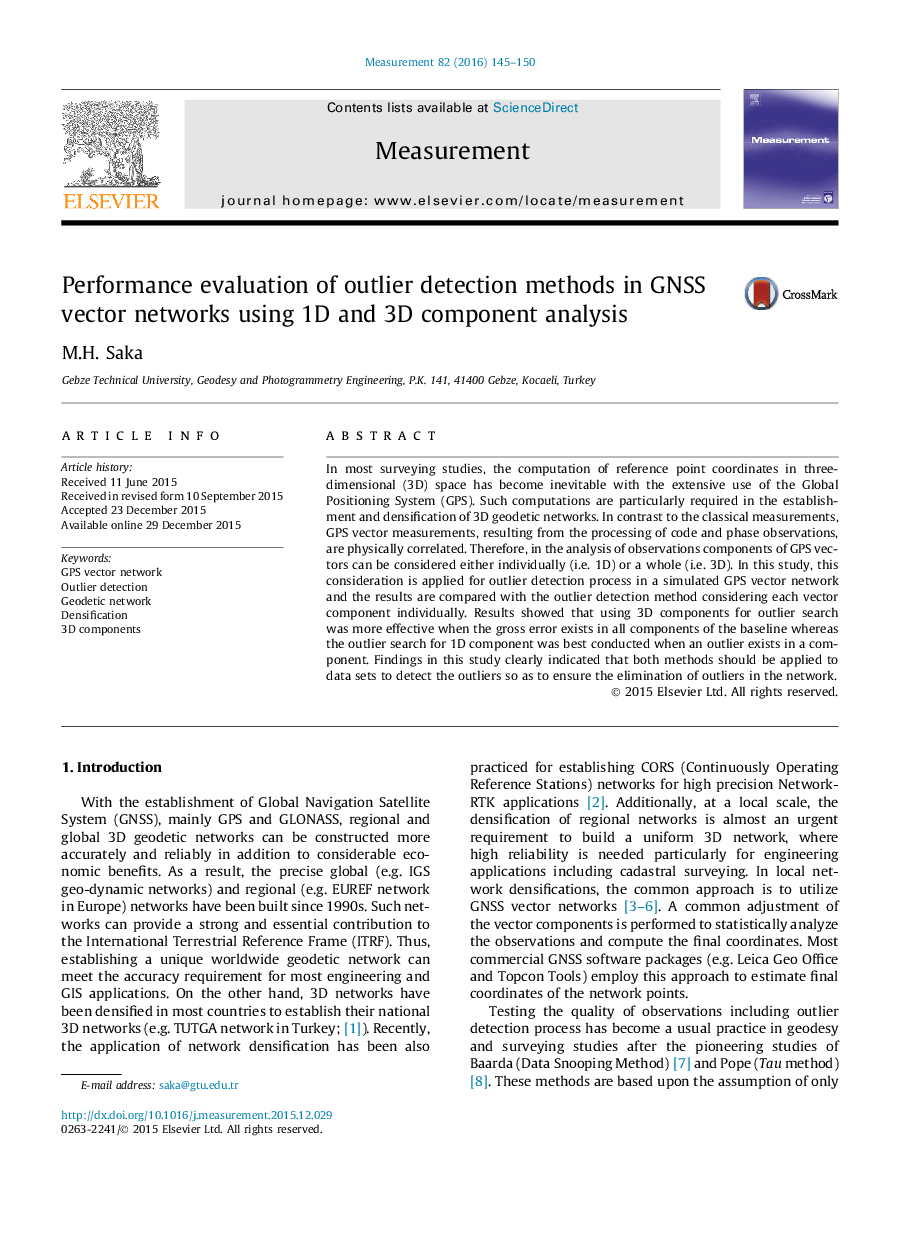| Article ID | Journal | Published Year | Pages | File Type |
|---|---|---|---|---|
| 730871 | Measurement | 2016 | 6 Pages |
In most surveying studies, the computation of reference point coordinates in three-dimensional (3D) space has become inevitable with the extensive use of the Global Positioning System (GPS). Such computations are particularly required in the establishment and densification of 3D geodetic networks. In contrast to the classical measurements, GPS vector measurements, resulting from the processing of code and phase observations, are physically correlated. Therefore, in the analysis of observations components of GPS vectors can be considered either individually (i.e. 1D) or a whole (i.e. 3D). In this study, this consideration is applied for outlier detection process in a simulated GPS vector network and the results are compared with the outlier detection method considering each vector component individually. Results showed that using 3D components for outlier search was more effective when the gross error exists in all components of the baseline whereas the outlier search for 1D component was best conducted when an outlier exists in a component. Findings in this study clearly indicated that both methods should be applied to data sets to detect the outliers so as to ensure the elimination of outliers in the network.
